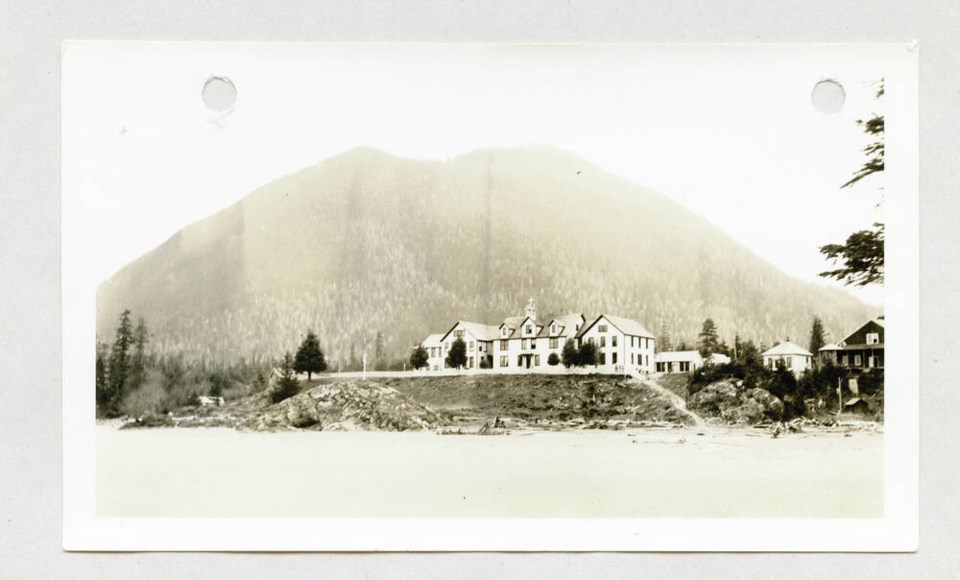The first phase of research to find missing children who attended residential schools in the Ahousaht region has found likely and potential unmarked graves at cemetery sites near both schools.
The unmarked grave locations were identified at Ahousaht Indian Residential School and Christie Indian Residential School.
The first phase of research did not give an indication of how many unmarked graves there may be. That was a deliberate decision taken by the research team that has been working on the project for three years.
During closing remarks of a presentation to the Ahousaht community Wednesday, Anne Atleo, manager of the Residential School Research Project, said the number is not the important piece.
“It’s not the numbers. Every one, every one of those figures represents somebody’s son or daughter, somebody’s brother or sister. It’s not simply a figure,” she said. “That was a child, that was a child taken from their parents.
“We always want to remember and keep that human element in it because our creator gave us life, gave us breath, gave us this beautiful area to live with him and somebody decided our parents weren’t going to be good parents.
“How dare they.”
Children from Ahousaht and First Nations communities across the Island and B.C. were taken from their families to the two schools, where they lived in overcrowded and unsanitary conditions and some were physically abused.
The Ahousaht school, adjacent to the village of Ahousaht on Flores Island, operated from 1904 to 1940, when it was destroyed by a fire. The United Church ran the school from 1925.
The Christie Indian Residential School on Meares Island was operated by the Roman Catholic Church from 1900 to 1971, when the school was closed and students moved to the Christie Student Residence in Tofino.
Atleo said there were archival records of 13 recorded deaths of children at the Ahousaht school and 23 deaths at the Christie school, but those records had been highly redacted and the names of the children were not known.
The National Centre for Truth and Reconciliation found records of those deaths, but the number of deaths is believed to be much higher.
Atleo said that’s why it’s important they have the resources to continue the research, which includes archival and archaeological research, field work and oral history gathering.
She made an impassioned plea Wednesday for more community members to come forward, and for residential school survivors to come forward to provide oral accounts that will help find the children.
“We need to get the oral accounts so we can build that evidence and to write the history,” she said. “We didn’t have control over who wrote the history of Canada, but now we do. We can rewrite and write the history and speak the truth of your experience.
“We will do our utmost to find the evidence with your help to write the history.”
Atleo noted they need long-term funding to continue the work, which includes digitally mapping and scanning the sites of the two schools and surrounding area.
She pleaded for better and easier access to archives, which too often come heavily redacted.
“The experiences of the warriors (children who attended the schools) and their courage have strengthened the Ahousaht community,” said Angus Campbell, elected councillor of the Ahousaht First Nation. “Despite the reign of the residential schools, we are still here. Today, we share the stories and shared experiences of those who survived residential school so future generations will know about what happened here.”
The research project is designed to identify as many children as possible by name, where they went when they were taken from their families and who is missing from the research.
The idea is to collect the information and use it as a catalyst for healing.
“Our work is focused on finding evidence to support the truth of the former students that attended these schools,” said Atleo. “These are shared experiences of those that tried to break us. There were many broken hearts and broken spirits. But our ancestors persevered.
“They survived residential school and it’s important we acknowledge their truths and identify missing children.”
The next phase of the project includes identifying other areas for research, a site usage history, and modelling and layering all of the collected data to determine priority search areas.
It means building the capacity for research within the community so the work can continue to be community-led.
“But, in order to provide thorough and meaningful answers to our people and the public about what happened at these residential schools, we require ongoing support and funding from the institutions that put them in place,” Atleo said, with a nod to the federal government and religious organizations that operated the schools.



